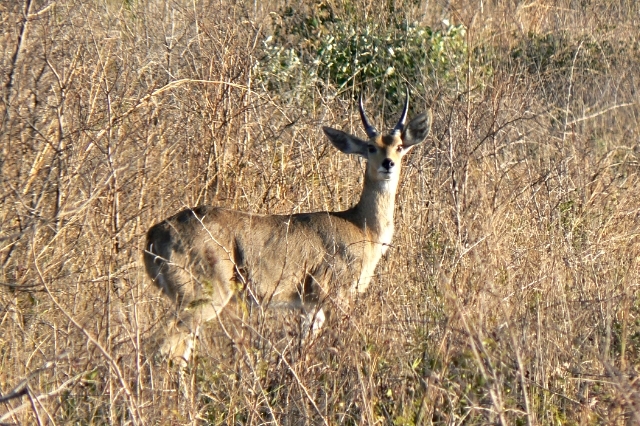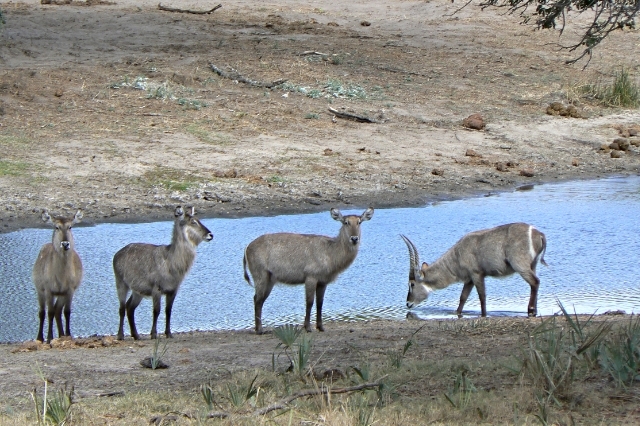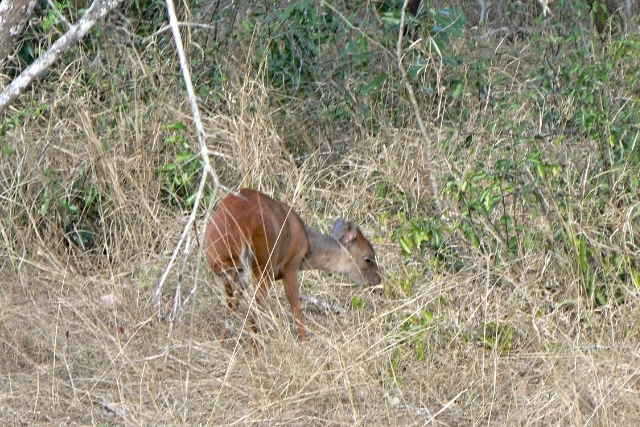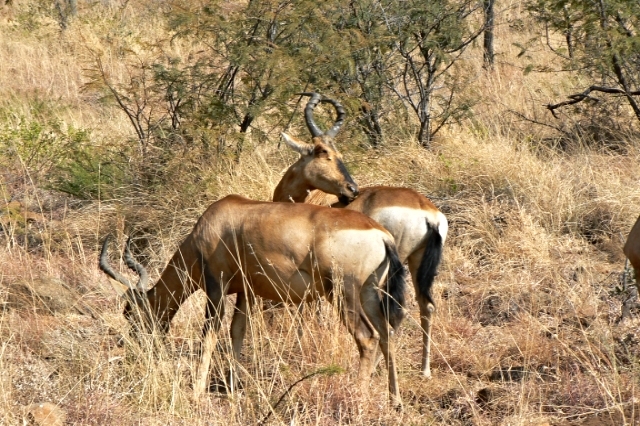Bushbuck Tragelaphus scriptus
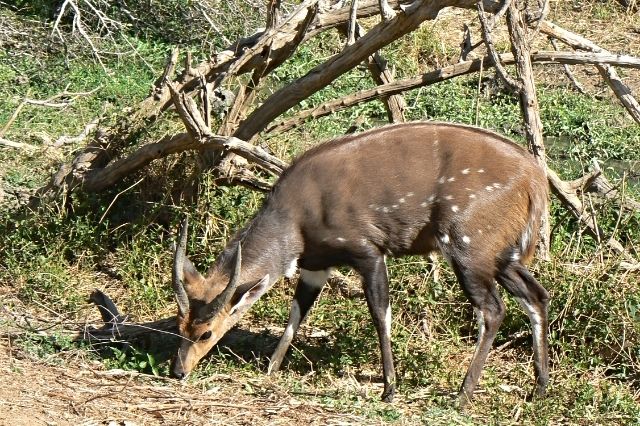
Kruger National Park, 26 August 2014
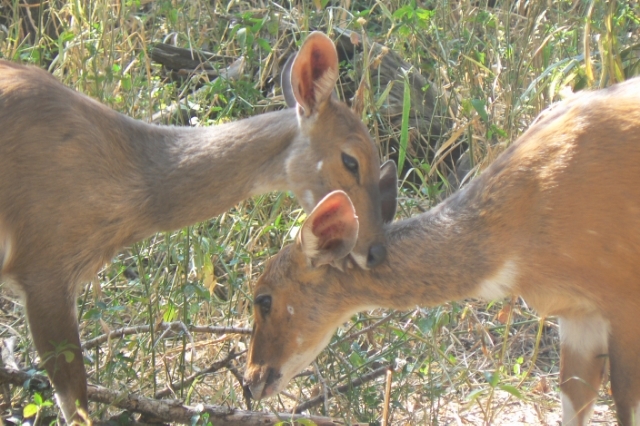
Kruger National Park, 28 August 2014
Body Length: 100-150 cm
Shoulder Height: 65-100 cm
Tail Length: 30-35 cm
Weight: 25-80 kg.
The dark brown to chestnut to hazel coat has a varied pattern of up to 7 white stripes and spots, depending on the subspecies. The face has 1-2 white cheek spots, small white stripes at the corners of the eyes, and a white muzzle. The bushy tail is white underneath. The horns are found only in the males, and grow 25-55 cm long. They are nearly straight, with one tight twist.
Gestation Period: About 6 months
Young per Birth: 1
Weaning: After 6 months
Sexual Maturity: At 11-12 months
Life span: About 12 years
Breeding occurs throughout the year. The single young lies hidden away from its mother for the first few weeks of life.
Bushbuck may be active throughout the 24 hours of the day, although they tend to be nocturnal near human settlements. Using trails through dense jungle, the bushbuck ranges through a restricted "home" area, which may be only a few hundred meters across. These home ranges overlap extensively, and it has been noted that the greater the population density, the smaller these home ranges are. Savannah densities have been recorded as over 25 animals per square kilometer, while forest densities are much smaller - only 4 animals per square kilometer. Males compete fiercely for females in estrous, but they are not territorial. Confrontations between males are composed of displaying and charging, followed by the locking of horns and vigorous twisting in an attempt to throw the opponent off balance. Stabbing with the horns has also been noted. The bushbuck is an excellent jumper, clearing 2 meter tall fences with ease, and swims well. The call resembles the bark of a dog.
Family group: Usually solitary, although sometimes in pairs.
Diet: Grasses as well as leaves, buds, and fruit.
Main Predators: Leopard, lion, crocodile.
Bushbuck occur widely in sub-Saharan Africa wherever there is cover to conceal it, from sea level to 4,000 m, from rainforest edge to patches of gallery forest and bush near water in the subdesert. It is naturally absent from arid and semi-arid regions and from extensive areas of closed-canopy forest. Its ability to survive in human-dominated landscapes and to withstand heavy hunting pressure have enabled it to persist over much of its former range. Bushbuck are primarily browsers.
The Bushbuck ranges very widely in sub-Saharan Africa, occurring in 40 African countries, more than any other antelope species. They range from Mauritania, Senegal and Guinea Bissau through West Africa, south of the Sahara, to north-east Africa then southwards throughout East Africa and the more mesic areas of southern Africa to the Western Cape of South Africa.





